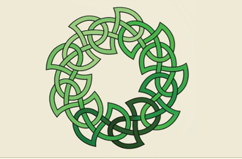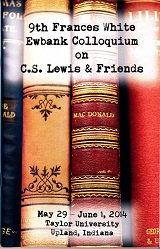Event Title
Paper Session 2-B
Location
Euler 108
Start Date
30-5-2014 9:00 AM
Description
"King Maker in The Mind of The Maker: Sayer's View of Creativity through the Hebraic Lens of Human Vice- Regency" - Mark Eckel
"The mind of the maker and the Mind of the Maker are formed on the same pattern, and all their works are made in their own image." Dorothy Sayers goes to great lengths to expose a Christian view of creativity. Seen from a First Testament perspective, Sayer's ideas conform closely to human kingship originally intended by God; the vestigates of the robes remain.
In this paper I will seek to intersect Sayer's views of The Creator, the creature, creation, and creativity with the biblical-cultural connections in Genesis 1. What does it mean to be made in God's image in the ancient Near Eastern world? How does the answer to that question establish Sayer's essential work The Mind of the Maker? Why must The Church return to the Hebraic viewpoint of creativity as surmised by Sayers and found in Genesis?
"C.S. Lewis and the Angelic Hierarchy: The Fairy Way of Writing: Spenser's The Farie Queene and C.S. Lewis's 'Habit of Mind'" - Susan Wendling
After describing the belief in the Angelic Hierarchy as central to ancient "spiritual cosmology," both Scriptural and Neoplatonic, this paper identifies Lewis's fascination with it in both his fiction (the Ransom trilogy) and his nonfiction (The Oxford History of English Literature in the 16th Century excluding Drama and The Discarded Image). Often viewed by Moderns as a "mythological hangover from pre-Modern times," belief in the Angelic Hierarchy is a key component of what Lewis calls "the Discarded Image." For those tempted to think that Lewis's interest in the Angelic Hierarchy was merely love for the beauty of the "old model," or else merely the mythic backdrop of his fictional "Random trilogy," this paper reveals Lewis's actual personal belief in the reality of the Angelic Hierarchy: the fact that God "comes filtered to us" through the hierarchies of angelic spiritual beings. Lewis's essay The Empty Universe reveals that the ancient "spiritual cosmology" has been increasingly replaced with a "modern" materialist worldview, leading not only to the "dryads leaving the trees" but also ultimately to the "abolition of man."
Event Type
Paper
Paper Session 2-B
Euler 108
"King Maker in The Mind of The Maker: Sayer's View of Creativity through the Hebraic Lens of Human Vice- Regency" - Mark Eckel
"The mind of the maker and the Mind of the Maker are formed on the same pattern, and all their works are made in their own image." Dorothy Sayers goes to great lengths to expose a Christian view of creativity. Seen from a First Testament perspective, Sayer's ideas conform closely to human kingship originally intended by God; the vestigates of the robes remain.
In this paper I will seek to intersect Sayer's views of The Creator, the creature, creation, and creativity with the biblical-cultural connections in Genesis 1. What does it mean to be made in God's image in the ancient Near Eastern world? How does the answer to that question establish Sayer's essential work The Mind of the Maker? Why must The Church return to the Hebraic viewpoint of creativity as surmised by Sayers and found in Genesis?
"C.S. Lewis and the Angelic Hierarchy: The Fairy Way of Writing: Spenser's The Farie Queene and C.S. Lewis's 'Habit of Mind'" - Susan Wendling
After describing the belief in the Angelic Hierarchy as central to ancient "spiritual cosmology," both Scriptural and Neoplatonic, this paper identifies Lewis's fascination with it in both his fiction (the Ransom trilogy) and his nonfiction (The Oxford History of English Literature in the 16th Century excluding Drama and The Discarded Image). Often viewed by Moderns as a "mythological hangover from pre-Modern times," belief in the Angelic Hierarchy is a key component of what Lewis calls "the Discarded Image." For those tempted to think that Lewis's interest in the Angelic Hierarchy was merely love for the beauty of the "old model," or else merely the mythic backdrop of his fictional "Random trilogy," this paper reveals Lewis's actual personal belief in the reality of the Angelic Hierarchy: the fact that God "comes filtered to us" through the hierarchies of angelic spiritual beings. Lewis's essay The Empty Universe reveals that the ancient "spiritual cosmology" has been increasingly replaced with a "modern" materialist worldview, leading not only to the "dryads leaving the trees" but also ultimately to the "abolition of man."


